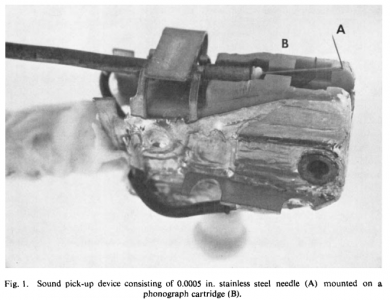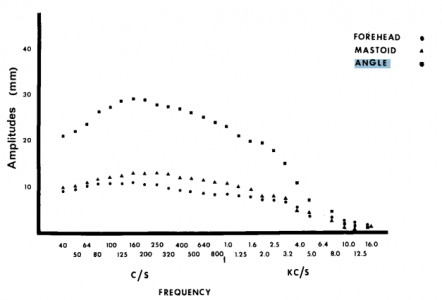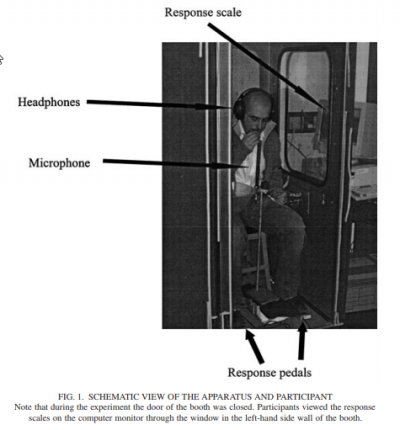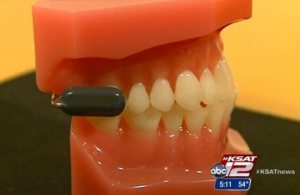This is an old revision of the document!
“Bone conduction is not a new discovery.
Ludwig Van Beethoven overcame deafness by biting a metal rod attached to his piano to hear his work.” source
can we use bone conduction to pick up chewing sounds and can we process and categorize them into something
recording techniques
we found several different methods of recording chewing sounds. listed below
A two component system was devised for recording and analyzing chewing sounds conducted through the bone. A specially designed 0.0005 in. thick stainless steel needle mounted on a phonograph cartridge (Figure 1) was found to be most reliable for picking up vibrations from bony surfaces while a subject chewed a standard portion of a test food for 10 strokes. The signal was fed through an amplifier and recorded on a in. magnetic tape in a tape recorder* run at a speed of 3¾ inch per sec. The sounds were also monitored with earphones by the investigator.
[…]
Three bony areas (center of the forehead, mastoid process and lower border of the mandible towards its angle) were chosen to establish, if possible, a single satisfactory and reliable landmark for picking up chewing sounds. The pick-up needle was gently pushed through the skin to rest on the bony surface at a point that was free of muscle attachment and had a relatively thin tissue cover. This point was established by palpating the area while the subject was asked to clench his teeth and relax. The pick-up device was held in place with a rubber cuff. The sounds were recorded separately from each of the three sites while the subject chewed a 3 g portion of peanuts.“frequency spectrographic analysis of bone conducted chewing sounds” (1971)
The experiments were conducted in a sound-proofed recording studio. Bone Conduction was recorded with a microphone Shadow 4001 (frequency band: 80-15000 Hz) pressed firmly against the cheek of the subject, near the maxillar angle, on the eating side. Air-conduction was recorded with a microphone AKG C414EB (frequency band: 20-20,000 Hz) held on the other side of the subject’s head. The diaphragm of the microphone was in front of the ear canal opening at 8 cm.
“contribution of air-and bone-conduction to the creation of sounds perceived during sensory evaluation of foods” (1991)
Participants were seated comfortably in a small sound-attenuated booth […] A microphone (Sennheiser ME66/K6 supercardioid, Wedemark, Germany), powered by a […] mixer, was placed such that when participants were seated in the booth, the microphone was positioned directly in front of their mouths. The output from the mixer was then fed through one of three attenuators (Advance Instruments step-attenuator, model A64A, Bethel Park, PA) situated outside the booth, and subsequently through one of three 1/3 octave graphic equalizers (Phonic, model PEQ3300, Tampa, FL) before being fed back to the participant in the booth, via a pair of headphones
“the role of auditory cues in modulating the perceived crispness and staleness of potato chips” (2004)
articles
hardware
currently a homebrew pickup\piezo pickup microphone seems the best bet.
AliExpress sellers of bone conduction headphones/microphnes bluetooth headsets



